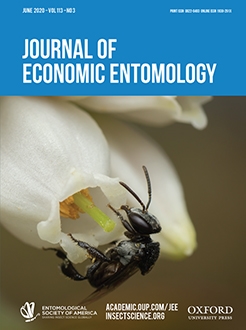Diet quality widely affects the survival, development, fecundity, longevity, and hatchability of insects. We used the greater wax moth Galleria mellonella (Linnaeus) to determine the effects of the antifungal, antibiotic terbinafine on some of its' biological parameters. The effects of terbinafine on malondialdehyde (MDA) and protein carbonyl (PCO) contents and the activity of the detoxification enzyme, glutathione S-transferase (GST), in the midgut of seventh-instar larvae of G. mellonella were also investigated. The insects were reared on an artificial diet containing terbinafine at concentrations of 0.001, 0.01, 0.1, and 1 g. The survival rates at all development stages of G. mellonella were significantly decreased at all terbinafine concentrations. The females from a control diet produced 82.9 ± 18.1 eggs; however, this number was significantly reduced to 51.4 ± 9.6 in females given a 0.1 g terbinafine diet. The highest concentration of terbinafine (1 g) completely inhibited egg laying. Terbinafine significantly increased MDA content and GST activity in the midgut tissue of seventh-instar larvae in a dose-dependent manner. Relative to controls, these low dietary concentrations of terbinafine significantly increased midgut PCO content; a 0.1 g terbinafine concentration raised PCO content from 155.19 ± 21.8 to 737.17 ± 36.4 nmol/mg protein. This study shows concentration-dependent effects on the biological traits of the greater wax moth G. mellonella, including the oxidative status and detoxification capacity of the midgut. Low terbinafine concentrations may be possible for use as an antifungal agent in insect-rearing diets.
How to translate text using browser tools
16 March 2020
The Use of Dietary Antifungal Agent Terbinafine in Artificial Diet and Its Effects on Some Biological and Biochemical Parameters of the Model Organism Galleria mellonella (Lepidoptera: Pyralidae)
Suzan Kastamonuluoğlu,
Kemal Büyükgüzel,
Ender Büyükgüzel
ACCESS THE FULL ARTICLE
It is not available for individual sale.
This article is only available to subscribers.
It is not available for individual sale.
It is not available for individual sale.

Journal of Economic Entomology
Vol. 113 • No. 3
June 2020
Vol. 113 • No. 3
June 2020
artificial diet
Galleria mellonella
glutathione S-transferase
malondialdehyde
Terbinafine




